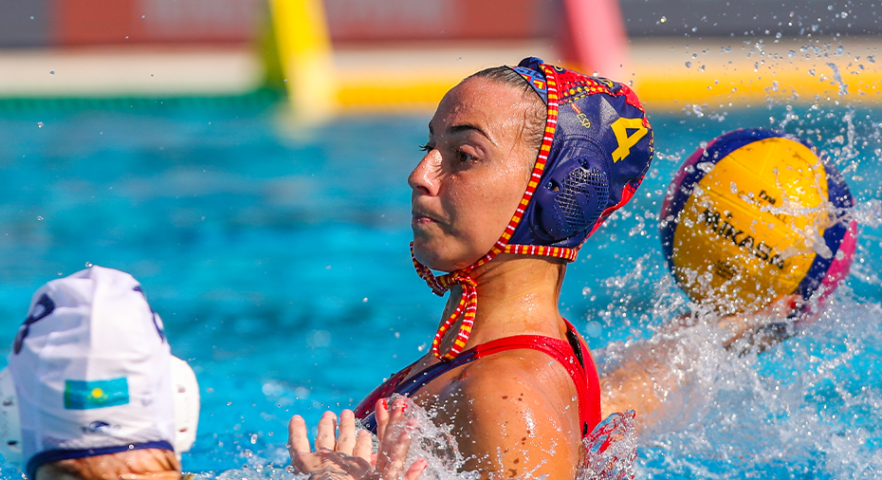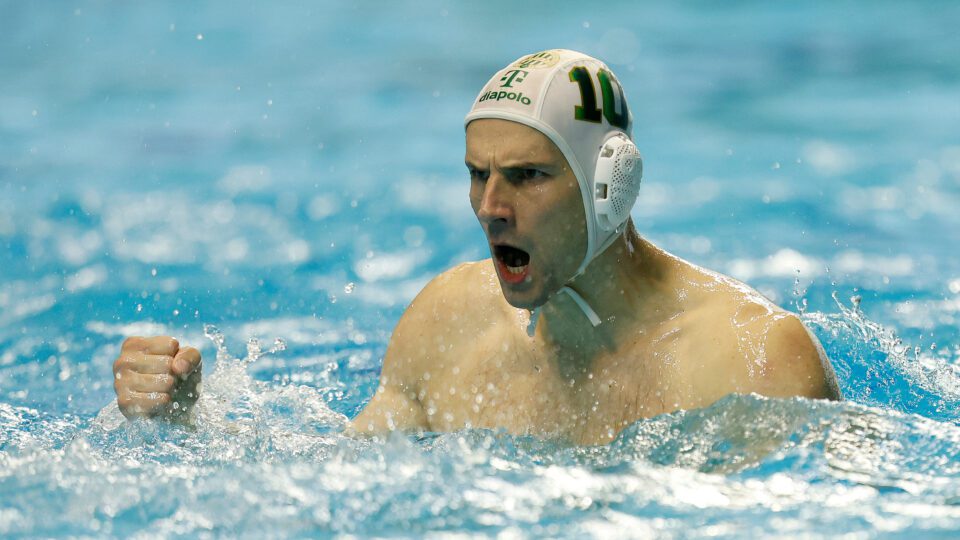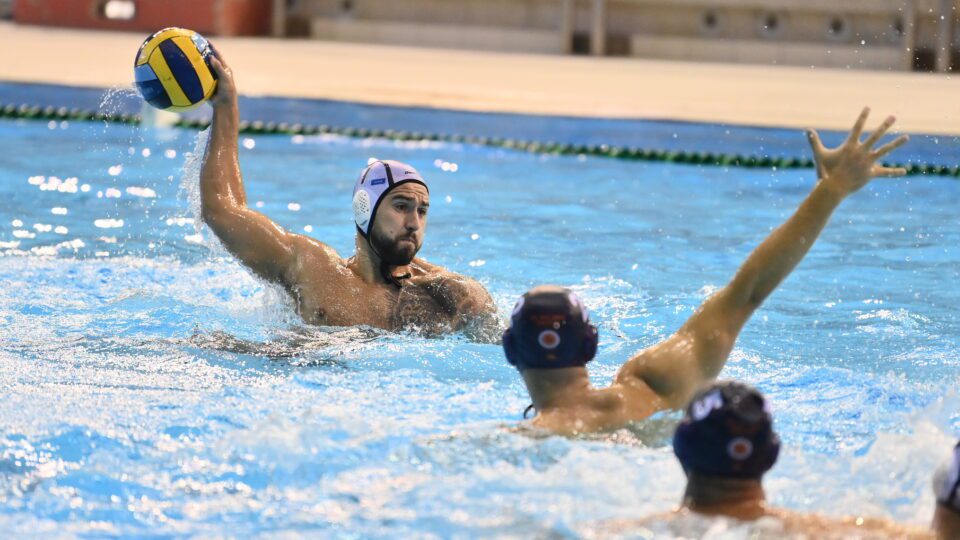The world of water polo never rests.
As the dust settles from the men’s World Cup’s revamp, the women’s tournament is about to begin its own revival. The men’s and women’s competitions share a name, but there are a number of differences in the format (as explained below).
This month, there are two World Cup tournaments; one in Rotterdam (11th-13th April) and one in Athens (19th-21st April). In the first tournament in Rotterdam, the eight teams are split into two groups of four. Each team plays three games in a round-robin format. Then, at the second tournament in Athens, the top two teams from groups A and B from Rotterdam will play each other in a new group to determine 1st-4th place rankings. The third- and fourth-place teams in Rotterdam’s groups are put into a new group and play round-robin games for fifth through eighth place. After both tournaments in April, the top six teams from Division 1 and the top two teams from Division 2 will move on to the World Cup finals (June 23–25). The finals tournament in Long Beach will be set up like the Men’s Champions League Final Eight, with quarterfinals, semifinals, and medal matches. It’s worth noting, the last-placed teams from Division 1 will be relegated to Division 2 in the next edition. The winners of Division 2 will be promoted to a higher rank.
Essentially, after the two rounds taking place this month, eight teams will be whittled down to six ahead of the World Cup finals in Long Beach.
You might be wondering why the teams should care about the World Cup Finals in Long Beach. The answer is this: a top-two finish in this competition is rewarded with a coveted ticket to the Doha World Championships in 2024.
The final standings of this qualifying stage will be decided at the tournament in Athens, but the best teams understand that a strong showing in Rotterdam can alleviate any pressure that might exist prior to the second competition, and perhaps allow for more experimentation. So there is a strong incentive for all the teams to set off on the right foot.
World Cup Groups – Rotterdam Group A – Greece, Netherlands, Hungary, Australia Group B – Spain, United States, Italy, China
Rotterdam will be the third Dutch city to host the women’s World Cup; Breda hosted the second women’s competition in 1980, while Eindhoven played hosts nine years later in 1989.
Group A
In Group A, a top-two finish appears to be a formidable task, considering the strength of the teams in the group. The quartet, comprising Greece, Hungary, the Netherlands, and Australia, has all tasted success in international water polo tournaments in the past year.
Greece finished as the runners-up at the European Championships in Split, while Hungary secured silver at the World Championships in Budapest. The Netherlands claimed a bronze medal in the same tournament, and Australia emerged as the champions of the Intercontinental Cup in Lima in February.
Pool A brings together Hungary, the Netherlands, and Greece once again, following their meeting at the European Championships last summer. The Dutch emerged victorious on that occasion, although Greece went on to secure the silver medal. The Magyars, meanwhile, will be eager to renew acquaintances with Australia, whom they have beaten three times in the past eight months.
More experience, less experimentation – Magyar World Cup team named
Hungary is arguably the favourite to emerge as the group winner, but the winners from 2002 are unlikely to take that tag lightly. The team demonstrated their credentials by triumphing over the United States at the World League in Tenerife, a feat that no other team has achieved since in a decade. With their physicality and experience, the Magyars will provide a stern test for their opponents.
World Cup Winners (Not including World League): 1. Netherlands – 8, 2. United States – 4, 3. Australia – 3, 4. Hungary – 1, 5. Canada – 1
Alexia Kammenou’s Greek side is a year older and stronger, but they will be looking to showcase their form in these April internationals. The team impressed everyone with their run to the final of the European Championships, and they will be aiming to build on that success.
The Netherlands and Australia have different national team programmes, but both teams are seeking to test themselves against top-quality opposition in this tournament. The Dutch, not typically known as a water polo powerhouse, will be buoyed by the support of their travelling contingent in Rotterdam. The hosts will be looking to make the most of their home advantage and progress from the group stage.
The Netherlands are the World Cups most successful teams: in 17 tournaments, they took Gold 8 times, double the number of gold medals won by the USA (4).
World Cup Highest win percentages: 1. Netherlands – 70%, 2. United States – 69%, 3. Australia – 55%, 4. Russia – 52%, 5. Spain – 50%.
Group B
Group B promises to deliver some of the most exciting fixtures of the women’s water polo calendar, featuring a clash between two of the sport’s greatest rivals: the reigning Olympic and World Champions, the United States, and the reigning European and World League Champions, Spain.
The 2023 World Cup will be only the third time Spain will appear at the competitIon of the same name (not including World League appearances).
The United States has held the upper hand over their European counterparts for almost a decade, but Spain’s recent form suggests that they could be on the verge of overturning that trend. Regardless, any encounter between these two powerhouses is always a spectacle that captivates the entire water polo community.
Spain vs USA: All-time record: 34 meetings, Spain wins: 18, USA wins: 13, Ties: 3
The fixture between the USA and Spain also carries an intriguing subtext, as both coaches, Adam Krikorian and Miki Oca, are looking to integrate their emerging stars with their established veterans. These two sides boast some of the best players in the history of the women’s game, but the challenge now is to prepare for a changing of the guard in the coming years.
Olympic Champions and teenage starlets – USA squad for World Cup
Completing the Group B lineup are China and Italy, both of whom have the potential to cause upsets against the two reigning champions. China, in particular, cannot be underestimated, having already shown their mettle by defeating Hungary at the Tokyo Olympics. Led by the highly successful European coach Charis Pavlidis, China is poised to make a splash on the world stage.
Meanwhile, Italy, represented primarily by players from SIS Roma and Ekipe Orizzonte, has made significant strides in club water polo over the past few seasons, culminating in Ekipe’s bronze medal in the Champions League. Their strong performances in recent friendlies against Spain and the United States suggest that they will be no pushovers in this group
Based on previous World Cup records, Italy has the highest chance of finishing the game level, drawing 25% of all their World Cup matches.
World Cup Schedule – Rotterdam (CET)
Tuesday 11th April.
14:00:Spain vs United States
16:00: Italy vs China
18:30: Netherlands vs Australia
20:30: Greece vs Hungary
Wednesday 12th April
14:00: Spain vs Italy
16:00: United States vs China
18:30: Netherlands vs Greece
20:30: Hungary vs Australia
Thursday 13th April
14:00: Greece vs Australia
16:00: Spain vs China
18:30: Netherlands vs Hungary
20:30: United States vs Italy
World Cup Rosters
Australia – Gabi Palm, Pascalle Casey, Sienna Hearn, Elle Armit, Tenealle Fasala, Bronte Halligan, Bridget Leeson-Smith, Abbie Andrews, Amy Ridge, Lena Mihailovic, Alice Williams, Sophie Pontre, Brooke McClean, Maddy Steere, Lilian Hedges, Genevieve Longman
China – Chen, Deng, Dong, Du, Z. Li, M. Li, B. Lu, Nong, Shao, Shen, H. Wang, S. Wang, Xie, Xiong, Xu, Xuan, J. Yan, S. Yan, Zhai, J. Zhang, Q. Zhong
Spain – Laura Ester, Paula Crespi, Ariadna Ruiz, Bea Ortiz, Paula Camus, Cristina Nogue, Paula Prats, Pili Pena, Judith Forca, Elena Ruiz, Maica Garcia, Alba Munoz, Paula Leiton, Nona Perez, Elia Jimenez, Martina Terre
Greece – Eleftheira Fountontou, Stefania Santa, Chrysi Diamantopoulou, Foivi Angeledi, Foteini Tricha, Nikoleta Eleftheriadou, Margarita Plevritou, Eleni Xenaki, Eirini Ninou, Eleni Elliniadi, Vasiliki Plevritou, Christina Siouti, Vasiliki Plevritou, Athina Giannopoulou, Maria Myriokefalitaki, Ioanna Stamatopoulou
Hungary – Boglarka Neszmely, Dorottya Szilagyi, Kata Hajdu, Vanda Valyi, Greta Gurisatti, Zsuzsanna Mate, Rebecca Parkes, Geraldine Mahieu, Rita Keszthelyi, Dora Leimeter, Panni Szegedi, Panna Pocze, Vanda Baksa, Kamilla Farago, Krisztina Garda, Alda Magyari.
Italy – Aurora Condorelli, Chiara Tabani, Gaia Galardi, Silvia Avegno, Dafne Bettini, Giusy Citino, Agnese Cocchiere, Domitilla Picozzi, Luna Di Claudio, Veronica Gant, Valeria Palmieri, Emma De March, Claudia Marletta, Lucrezia Cergol, Giulia Viacava, Caterina Banchelli.
Netherlands – Laura Aarts, Iris Wolves, Brigitte Sleeking, Sabrina Van der Sloot, Maartje Keuning, Maxine Schaap, Simone Van de Kraats, Bente Rogge, Vivian Sevenich, Kitty Joustra, Rozanne Voorvelt, Lola Moolhuijzen, Lieke Rogge, Nina Ten Broek, Britt Van den Dobbelsteen.
United States – Ashleigh Johnson, Maddie Musselman, Tara Prentice, Rachel Fattal, Julia Bonaguidi, Maggie Steffens, Emily Ausmus, Ava Stryker, Denise Mammolito, Rachel Gazzaniga, Alison Cohen, Jordan Raney, Amanda Longan
Read more about the World Cup
Follow us on Facebook, Twitter and Instagram.
For more video content, subscribe to our Youtube Channel and Tik Tok account






